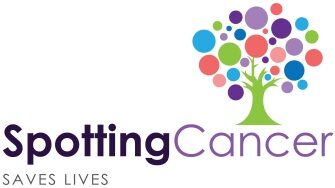Routine Cancer Screenings Not Enough To Catch Cancer Early
Cancer screening is looking for cancer before a person has symptoms. When abnormal tissue or cancer is found early (Stage 1), it is easier to treat or cure. By the time symptoms appear, cancer may have grown and spread.
There are several types of screenings for men and women. The American Cancer Society provides a list of the various available screenings and the recommended frequency. In reviewing the recommendations, many of them start at later stages in life and are frequently years apart. While screening is a critical part of cancer detection, it also has major limitations.
Download Our Spot and Survive Guides Free Now!
Learn the signs to potentially save yours and your family’s life.
THE LIMITATION
SOLUTION
There is a method that frequently catches cancer between scheduled screenings at an early stage.
Many cancers show signs and symptoms at the early stages as they start growing. This combined with knowledge of your body offers a solution. You know your body better than anyone else. You look at your body more frequently than anyone else, you know better than anyone else when you are not feeling right. Utilizing all these attributes will allow you to monitor your body for early cancer detection.
To optimize the chances of early cancer detection you must in addition to screening and genetic testing monitor your body on a regular basis. When you notice a change, it is a red flag, it doesn’t mean you have cancer but an immediate evaluation by a medical professional is critical. So, for early detection of the ugly “C” and stopping it in its tracks, it is imperative that you know the signs and symptoms of cancer and how to routinely check your body to find them. This will allow for timely treatment.
STEPS TO MONITOR YOUR BODY
Just like habitually wearing a seat belt can decrease your risk of serious injury or death in a car accident, making it a habit to monitor your body for cancer can help you catch it early before it spreads and advances into its late stages.
To start monitoring your body, you need a few things: first, a well-lit room and a full-length mirror. In addition, download and print the body monitoring guides and charts. You can find them all here: spottingcancer.org/guides/#body-monitoring.
- First – familiarize yourself with the signs and symptoms of cancer. Check out Step 1 to see how you can spot common cancer signs and symptoms. From changes in toenail color to more noticeable signs like weight loss or bruising, our complete guide will help you in evaluating your body changes.
- Create a baseline for your body by completing the BASELINE CHART.
- Download SYMPTOMS MONITORING CHART and AREAS TO BE MONITORED.
- Examine each part of your body shown in the AREAS TO BE MONITORED chart using the outlined procedure below to detect any changes. Repeat procedures on a regular basis.
- Determine if any changes have occurred using the SYMPTOMS MONITORING CHART.
How often should you monitor your body for early cancer detection?
When should you see your doctor?
Conclusion
Early cancer detection requires multiple procedures
Cancer screening coupled with habitual self-monitoring; genetic testing and know if your paternal family history is a fantastic way to stop cancer before it spreads. Not only that, it can be a very comforting process to know that you’re on the right track and doing everything you can to ensure that you’re doing your part to increase your chance of cancer survival.
To learn more about Spotting Cancer’s 5 Simple Steps for early cancer detection, hop over to the Spotting Cancer homepage, or better yet, join the Cancer Detection Squad today!
This information is intended as general information only. It was not written or intended as a substitute for medical advice. Please seek professional advice from your physician before taking any action that could affect your health.

